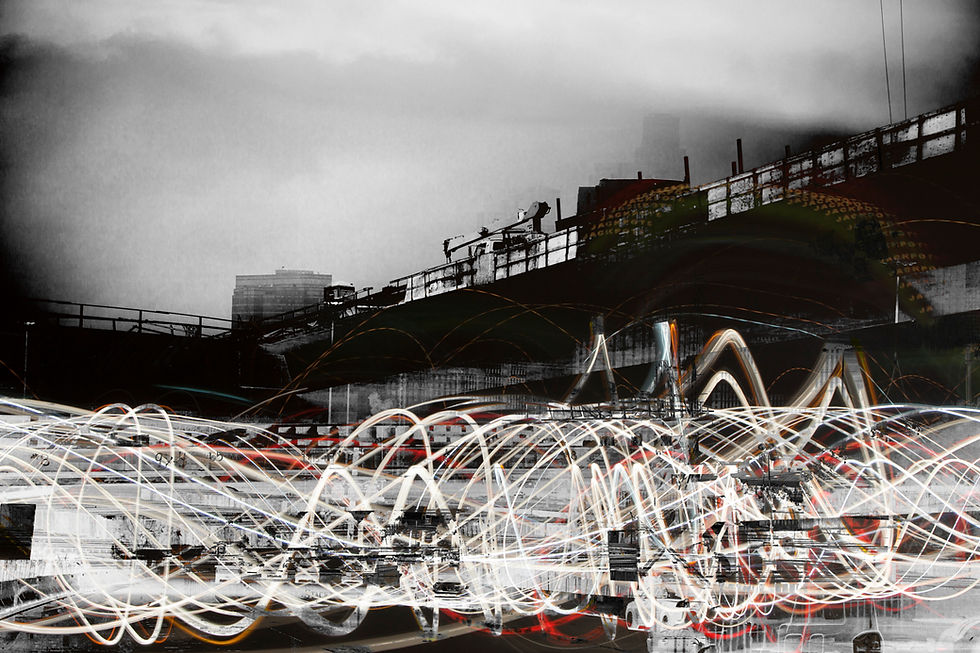
FATEMEH BURNES: drift
The book drift: imprints of nature and human nature is a non-linear journey inspired by a dialogue between generations and cultures about human vulnerability. There are only three portraits in drift, OC (Dream) at the beginning, Dachau (Dream) at the book’s center, and a final portrait, OC (Contemplation), all with my daughter Ava as their subject. They define drift as a narrative, however dreamlike, with a human center, giving a pulse to a flow of images that may not otherwise seem to belong together.
When Ava was much younger, we started a discussion about historical tragedies and why people have done what they’ve done. She and I shared a particular sensitivity about the Holocaust. We read about it, watched films about it, and talked about it.
On a trip visiting family in Germany I decided it was time for Ava and me to witness for ourselves what we had been discussing for all those years. I was specifically interested in Dachau because of the history of the camp, in particular the specific reasons this camp (the first of many) was established. It was created in opposition to the freedom at the core of our being: our choices, our beliefs, how we’re born, and to whom. Although I had my camera with me, I had no intention of photographing the camp, or saying anything as an artist about my experience. I felt I could hardly discuss something addressed in so many ways by so many more qualified people. Being born a Muslim to a mother of German descent further underscored my decision not to give myself that permission.
On the day we arrived at Dachau, it was raining very hard. I deliberately walked behind Ava to allow her the privacy of her experience. At a certain moment – the moment captured in the portrait at the center of the book – I saw my daughter, from the back, slacken physically. I couldn’t resist calling to her. When she turned, I saw a world in her face. She was trying to hide her pain, her confusion, her sorrow, and I knew then that history is not just pages or discussions, it is an energy here and now.
Walking through the camp, I gained the feeling that I was part of this experience. The male prisoners in the photographs displayed at the camp – they became my sons, they became my lovers, they became my husband, they became my father, and I lived a day that could never be measured in any timeline or history book. I lay down in all the beds, I looked through every window, I looked at every picture, every tree. I examined every mark and imprint on the walls and floors. Drift was born from this moment, and became not just about Dachau, but about us as humans, what we are capable of, our passion, our cruelty, our cultures, our instincts, our indulgences, our obligations, and our nature.
Drift is not just about human tragedy. It is about human nature, about everything we are capable of doing and feeling. It is equally about the nature we inhabit. That is why, in the book, roads are necessary and buildings are necessary, just as necessary as trees, water, and fire. Drift takes a measure of such imprints, and dreams according to that measure.
Fatemeh Burnes
January 2012
drift
"This book is a dream," writes Peter Frank in his essay to Fatemeh Burnes' drift "...of sorts. Its moments are real, but its course is fantastical." Burnes, accomplished as both painter and photographer, went out into the world to look, and came back into the studio with more than she expected. Rather than merely peer at things, Burnes got involved with them, both with their lonely, offhand beauty and with the poignancy of their human resonance..."
Fatemeh Burnes’ drift: An Avant-Garde of Book Tradition Tyler Stallings
Fatemeh Burnes’ drift is a book. This is a matter-of-fact statement. However, it is a special decision nowadays to want to make a bound book. The long history of artist-made books ranges over centuries, from William Blake to Dada to Dieter Roth and Ed Ruscha, with the latter two considered the progenitors of the genre as it took form in the latter 20th century. They all challenged the concept and definition of the “book,” especially its inherently linear structure and time-based experience.

























